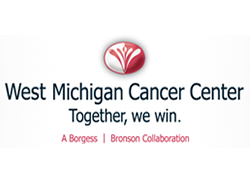Diagnostic Study of Patients With Stage I Testicular Cancer
| Status: | Completed |
|---|---|
| Conditions: | Cancer |
| Therapuetic Areas: | Oncology |
| Healthy: | No |
| Age Range: | 15 - 120 |
| Updated: | 10/25/2017 |
| Start Date: | May 1999 |
Correlation of Histopathology, Immunohistochemistry and Quantitative Radiology With Outcome in Early Stage Nonseminomatous Germ Cell Tumor
RATIONALE: Diagnostic procedures may improve a doctor's ability to predict the recurrence of
testicular cancer.
PURPOSE: Diagnostic trial to detect the risk of recurrent disease in patients who have stage
I testicular cancer and who have undergone orchiectomy within the previous 12 weeks.
testicular cancer.
PURPOSE: Diagnostic trial to detect the risk of recurrent disease in patients who have stage
I testicular cancer and who have undergone orchiectomy within the previous 12 weeks.
OBJECTIVES:
- Use histopathological and immunohistological analysis of the primary testis tumor along
with quantitative radiographic assessment to identify a subset of patients with clinical
stage I nonseminomatous germ cell tumor of the testis who have a very low risk of
metastasis.
- Compare these findings with other predictive models of risk of metastasis after
orchiectomy in this group of patients.
OUTLINE: Patients undergo primary retroperitoneal lymph node dissection (RPLND) or active
surveillance as management of their disease. The choice of treatment is determined by the
physician and the patient. Patients with pathologically positive resected lymph nodes may
undergo treatment (observation or adjuvant chemotherapy) at investigator's discretion.
All patients are tested by quantitative radiology and blood markers (HCG and AFP) at baseline
and then at various times after surgery to identify pathologic stage II disease. The timing
of these studies depends on the stage of disease and/or type of disease management.
Patients who undergo RPLND, have stage I or II disease, and do not receive adjuvant therapy
(radiation or chemotherapy) are followed monthly during year 1, every 2 months during year 2,
every 6 months during years 3-5, and annually thereafter.
Patients who undergo RPLND, have stage II disease, and receive adjuvant therapy are followed
every 2 months during year 1, every 4 months during year 2, every 6 months during years 3-5,
and annually thereafter.
Patients who do not undergo RPLND are followed monthly during year 1, every other month
during year 2, every 6 months during years 3-5, and annually thereafter.
PROJECTED ACCRUAL: A total of 315 patients will be accrued for this study within 3 years.
- Use histopathological and immunohistological analysis of the primary testis tumor along
with quantitative radiographic assessment to identify a subset of patients with clinical
stage I nonseminomatous germ cell tumor of the testis who have a very low risk of
metastasis.
- Compare these findings with other predictive models of risk of metastasis after
orchiectomy in this group of patients.
OUTLINE: Patients undergo primary retroperitoneal lymph node dissection (RPLND) or active
surveillance as management of their disease. The choice of treatment is determined by the
physician and the patient. Patients with pathologically positive resected lymph nodes may
undergo treatment (observation or adjuvant chemotherapy) at investigator's discretion.
All patients are tested by quantitative radiology and blood markers (HCG and AFP) at baseline
and then at various times after surgery to identify pathologic stage II disease. The timing
of these studies depends on the stage of disease and/or type of disease management.
Patients who undergo RPLND, have stage I or II disease, and do not receive adjuvant therapy
(radiation or chemotherapy) are followed monthly during year 1, every 2 months during year 2,
every 6 months during years 3-5, and annually thereafter.
Patients who undergo RPLND, have stage II disease, and receive adjuvant therapy are followed
every 2 months during year 1, every 4 months during year 2, every 6 months during years 3-5,
and annually thereafter.
Patients who do not undergo RPLND are followed monthly during year 1, every other month
during year 2, every 6 months during years 3-5, and annually thereafter.
PROJECTED ACCRUAL: A total of 315 patients will be accrued for this study within 3 years.
DISEASE CHARACTERISTICS:
- Clinical stage I nonseminomatous germ cell tumor of the testis
- Must have had a radical inguinal orchiectomy with or without retroperitoneal lymph
node dissection within prior 12 weeks
- AFP and HCG normal or decreasing after orchiectomy at a rate consistent with
known half lives
- Pathology blocks and radiologic studies available
- No metastatic disease on physical exam or chest or abdominal/pelvic CT
- No pure seminoma (unless associated with elevated AFP at diagnosis)
PATIENT CHARACTERISTICS:
Age:
- 15 and over
Performance status:
- Not specified
Life expectancy:
- Not specified
Hematopoietic:
- Not specified
Hepatic:
- Not specified
Renal:
- Not specified
Other:
- No prior malignancy including prior primary testicular cancer
PRIOR CONCURRENT THERAPY:
Biologic therapy:
- Not specified
Chemotherapy:
- No prior chemotherapy
Endocrine therapy:
- Not specified
Radiotherapy:
- Not specified
Surgery:
- See Disease Characteristics
We found this trial at
12
sites
CCOP - Columbus As one of the original 20 CCOPs, the Columbus Community Clinical Oncology...
Click here to add this to my saved trials
675 N Saint Clair St # 21-100
Chicago, Illinois 60611
Chicago, Illinois 60611
(312) 695-1156

Robert H. Lurie Comprehensive Cancer Center at Northwestern University The cancer center was first established...
Click here to add this to my saved trials
West Michigan Cancer Center In 1994, Borgess Health Alliance and Bronson Healthcare Group opened the...
Click here to add this to my saved trials
Click here to add this to my saved trials
Click here to add this to my saved trials
Click here to add this to my saved trials
Click here to add this to my saved trials
Click here to add this to my saved trials
Click here to add this to my saved trials
Click here to add this to my saved trials
Click here to add this to my saved trials
Click here to add this to my saved trials

